History of our faculty
Chemistry and Pharmacy
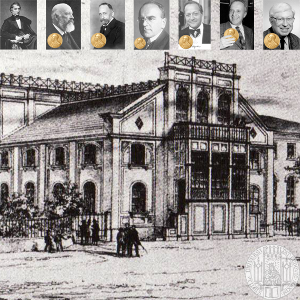
Chemistry and Pharmacy

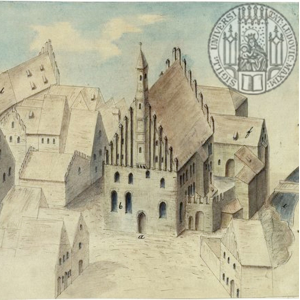
Duke Ludwig IX der Reiche founds the "Hohe Schule" (high school) in Bavaria in Ingolstadt: the Ludwig-Maximilians-University Munich (LMU).
The LMU has produced 34 Nobel Prize winners, among others.
Georg Ludwig Claudius Rousseau, city pharmacist in Ingolstadt, teaches "Chemistry of animal, vegetable and mineral substances" in the pharmacy laboratory. In 1776, he was appointed full professor of chemistry and pharmaceutical science, and in 1789 he was elected rector of the university. He was succeeded in 1794 by Georg Augustin Bertele, surgeon and city pharmacist in Amberg.

Elector Max IV Joseph von Bayern (later King Maximilian I) moves the "Hohe Schule" from Ingolstadt to Landshut.
The Bavarian Academy of Sciences, founded in 1758, establishes a Chemistry Section in Munich. The physician and pharmacist Adolph Ferdinand Gehlen is appointed head. In 1815, the Academy begins building a chemical laboratory in Munich. A. F. Gehlen dies of arsenic hydrogen poisoning. The Paris-trained chemist Heinrich August Vogel becomes his successor.
Edict on the medical profession in Bavaria: pharmacists must study for two years.
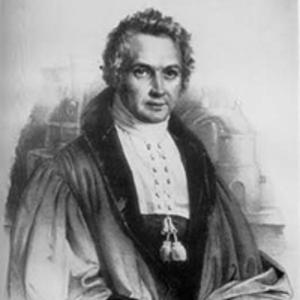
Johann Andreas Buchner, pharmacist in Munich, is appointed Professor of Pharmacy, Toxicology and Pharmaceutical Science at the "Hohe Schule" in Landshut.
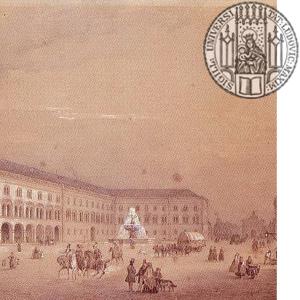
King Ludwig I orders the transfer of the university, later named after Duke Ludwig der Reiche and King Maximilian I, from Landshut to Munich.
Johann Andreas Buchner is transferred from Landshut to Munich. From 1830, he teaches pharmaceutical chemistry in a privately financed institute and in 1840 moves into an institute with a laboratory and lecture hall in the main university building on Ludwigstrasse. In 1842, he is elected rector of Ludwig Maximilian University.

Justus von Liebig, then Germany's best-known chemist, was appointed from Giessen to the chair of chemistry in Munich and was given a new institute building at Sophienstrasse and Arcisstrasse.
Among Liebig's doctoral students were:
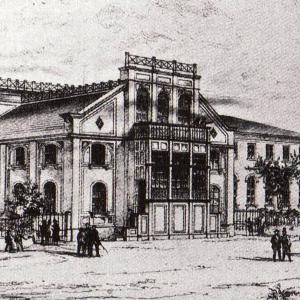
The chemical laboratory under the direction of Adolf von Baeyer.
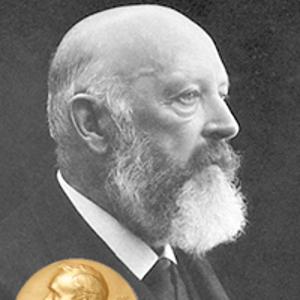
Two years after Liebig's death, Adolf von Baeyer is appointed full professor of chemistry. The institute, which now also has an inorganic department in addition to the organic department, develops into Germany's best-known chemistry school after being expanded under Baeyer's leadership. Baeyer was ennobled in 1885 and received the Nobel Prize for Chemistry in 1905 for work on organic dyes.
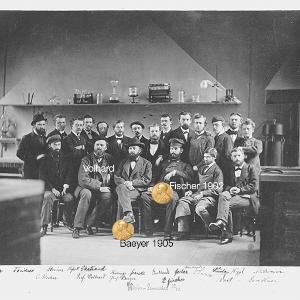
Baeyer's large working group includes many students who are later honored as outstanding scientists, e.g.
Chemistry and pharmacy move from the medical to the philosophical faculty.
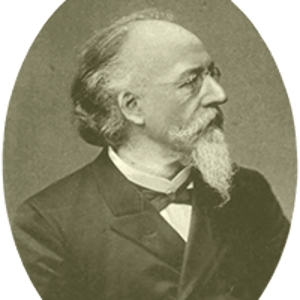
Albert Hilger is appointed to the chair of pharmaceutical chemistry by Erlangen and receives a new institute building in Karlstraße. In 1894, an "Anstalt für Nahrungs- und Genussmittel" (institute for food and beverages) is added.
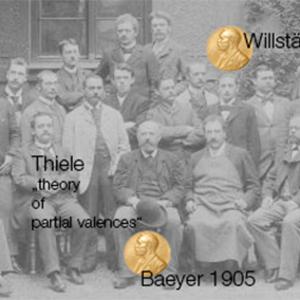
Group picture of the members of the Chemical Institute. In addition to the two Nobel Prize winners Baeyer and Willstätter, you can see, among others:
Following Baeyer's proposals, the "Verbandsexamen" (association examination) is introduced for all chemistry students in the German Reich.
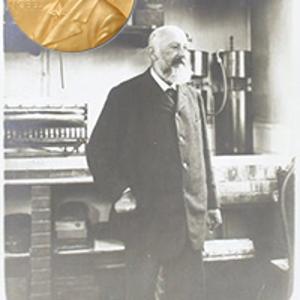
Adolf von Baeyer receives the Nobel Prize in Chemistry.
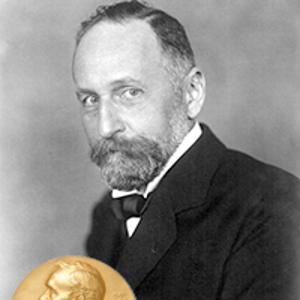
A. v. Baeyer resigns and Richard Willstätter, Baeyer's student and director at the Kaiser Wilhelm Institute for Chemistry in Berlin, is appointed full professor of chemistry and director of the "chemical laboratory of the state. Willstätter receives the 1915 Nobel Prize for Chemistry in the same year for research on plant dyes. The chemical institute is enlarged and modernized.
a "Gerichtlich-Chemische Untersuchungsstelle" (forensic chemical testing laboratory) and a "Forschungsanstalt für Lebensmittelchemie" (research institute for food chemistry) are established.
Willstätter resigns as director of the institute because of anti-Semitic tendencies in the university and emigrates to Switzerland in 1939.
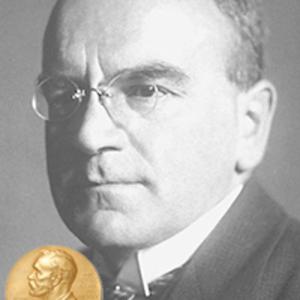
Willstätter was succeeded by Heinrich Wieland, a Baeyer student and director of the Chemical Institute in Freiburg. Wieland was awarded the Nobel Prize in Chemistry in 1927 (for work on bile acids).
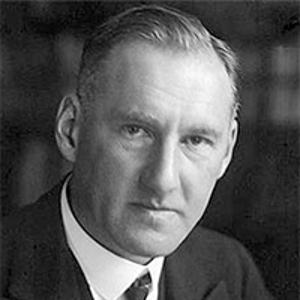
Warsaw-born Kasimir Fajansbecomes head of the Institute for Physical Chemistry on Sophienstrasse, built with the help of the Rockefeller Foundation. In 1935 he is dismissed because he is Jewish, and in 1936 he is expatriated.
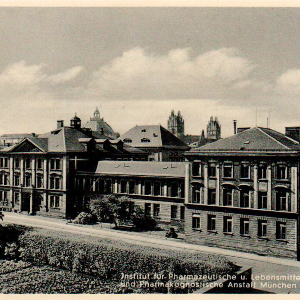
A pharmacognostic institute ("Institut für Pharmazeutische Arzneimittellehre") is established in Karlstraße.
Chemistry and pharmacy move from the Faculty of Philosophy to the Faculty of Science.
the administration of the "Chemical Laboratory of the Academy of Sciences" is taken over by the University.
Establishment of a diploma program chemistry.
The chemical and pharmaceutical institutes are destroyed by bombs.
Teaching and research are taken up on a makeshift basis.
Eugen Bamann, Willstätter's student, is appointed head of the Institute of Pharmacy and Food Chemistry in Munich. Research and teaching are housed in makeshift quarters in various parts of the city.

Heinrich Wieland becomes professor emeritus. By 1953, four chairs are established and filled:
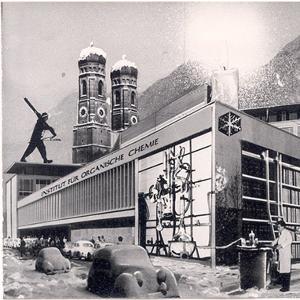
four new institutes (organic, inorganic, physical chemistry and biochemistry) are built between Karlstraße and Sophienstraße.
New buildings for the "Institute of Pharmacy and Food Chemistry" and the "Institute of Pharmaceutical Pharmacy" are erected between Sophienstrasse and Karlstrasse.
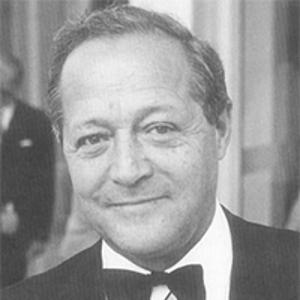
Feodor Lynen receives the Nobel Prize in Medicine
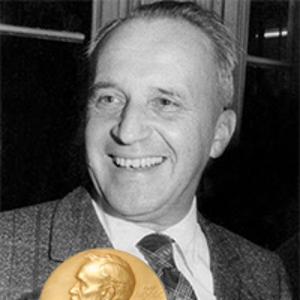
Ernst Otto Fischer receives the Nobel Prize in Chemistry.
Ernst Otto Fischer worked at the LMU from 1959 to 1964, first as an associate professor and then as a full professor.
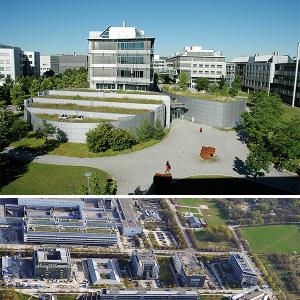
Relocation of the Faculty of Chemistry and Pharmacy to the "Campus Großhadern/Martinsried" on the western edge of Munich.
Establish a bachelor's/master's degree program in chemistry and biochemistry in place of the chemistry diploma program.
Establish a bachelor's/master's degree program in Pharmaceutical Sciences.
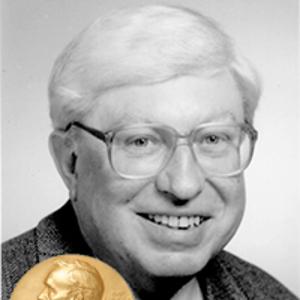
Nobel Prize in Chemistry for Gerhard Ertl (1973 - 1986 Member of the Faculty of Chemistry and Pharmacy)
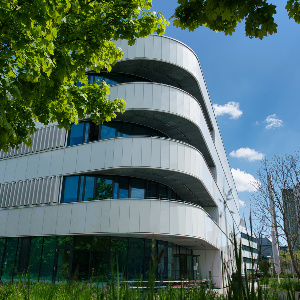
Opening of the new research building "Center for Molecular Biosystems" BioSysM
Film about the existing and new buildings on the Campus Großhadern/Martinsried
4:43 | 4 Aug 2020 | ©O. Baron
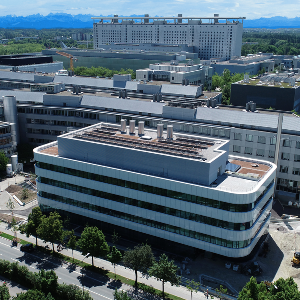
Opening of the new research building "Institute for Chemical Epigenetics" ICEM